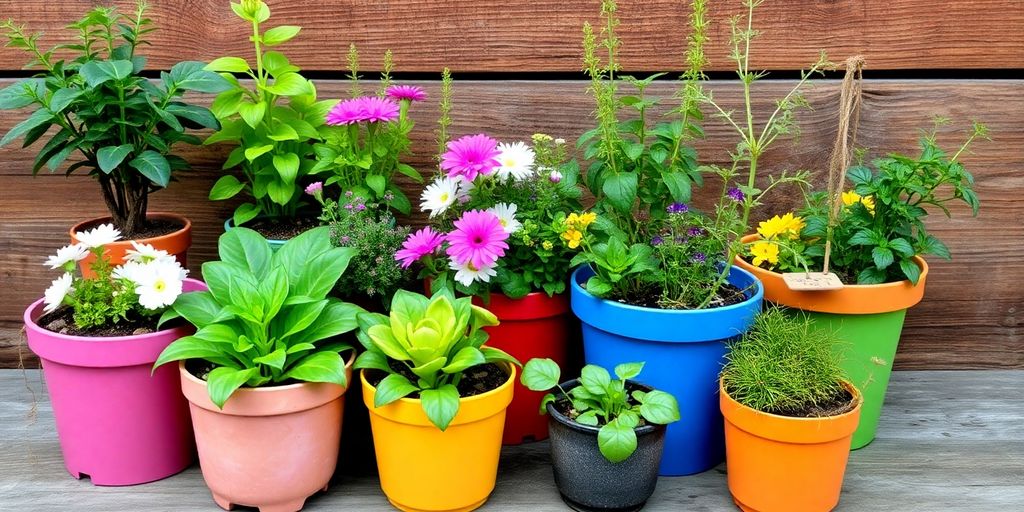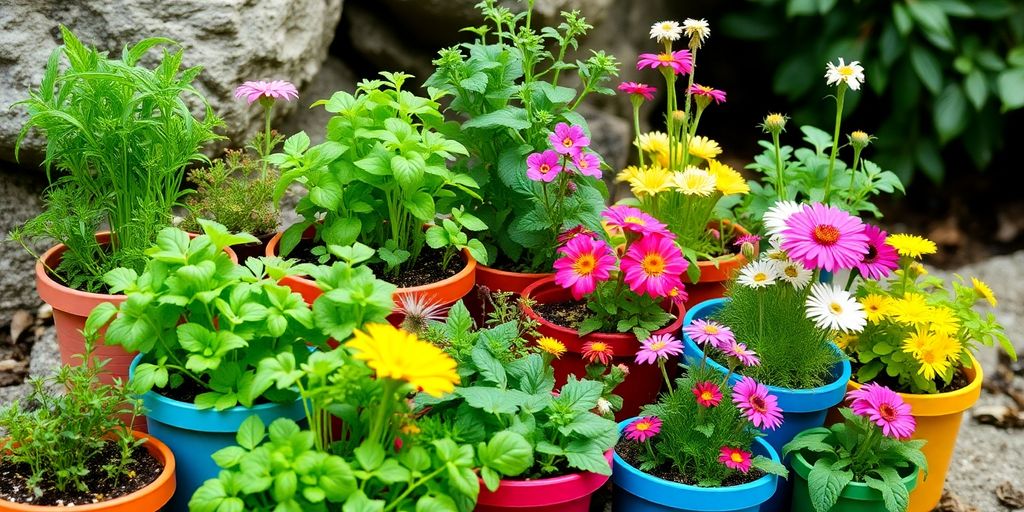How to create a mini garden in pots at home is a rewarding skill that brings nature closer to your everyday life. Whether you live in a small apartment or have limited outdoor space, mini gardening offers a perfect solution. It’s an easy way to add charm and freshness to any environment.
With just a few pots, the right soil, and some creativity, you can grow herbs, flowers, or even vegetables. The beauty of mini gardening lies in its flexibility and simplicity. No large backyard or expert knowledge is needed to begin.
This growing trend is ideal for those looking to relax, decorate, and even eat healthier with homegrown ingredients. Mini gardens also make great DIY projects for families and individuals alike. You’ll be surprised how much joy a small green corner can bring.
In this guide, we’ll walk you through the basics to get started. From choosing containers to plant selection and maintenance tips, everything you need is here. Let’s explore how to make your own miniature oasis at home.
Key takeaways
- Pick pots that fit your style and space—think outside the traditional terracotta!
- Choose plants that thrive in small spaces, like succulents or herbs, for easy care.
- Regularly check your plants’ water and sunlight needs to keep them healthy and happy.
Choosing the right pots and plants for your mini garden
Okay, so you’re ready to dive into the world of mini gardens? Awesome! The first step is picking out the right pots and plants. Trust me, this can make or break your whole project. I’ve seen folks try to cram a redwood into a teacup – doesn’t end well, y’all!
Selecting the best pot materials
When it comes to pots, you’ve got options galore. But not all pots are created equal, especially for mini gardens. Here’s the lowdown:
- Terracotta: These are classic and cheap. Plus, they breathe well, which is great for preventing root rot. But they can dry out quickly, so keep an eye on the watering.
- Plastic: Lightweight and they hold moisture like nobody’s business. Perfect if you’re a forgetful waterer like me sometimes. Just make sure they have drainage holes!
- Ceramic: These look fancy and come in all sorts of colors and designs. They’re heavier than plastic, so they’re good if you’re worried about your mini garden getting knocked over. But they can be pricey.
- Upcycled containers: Get creative! Old teacups, tin cans, even broken toys can become adorable mini garden homes. Just make sure whatever you use is clean and has drainage.
Ideal plants for small spaces
Now for the fun part: plants! But remember, we’re talking mini gardens here. So, think small. Here are some of my go-to choices:
- Succulents: These are practically made for mini gardens. They’re drought-tolerant, come in tons of shapes and colors, and are super easy to care for. Echeverias, sedums, and haworthias are all great options.
- Herbs: A mini herb garden is both cute and practical! Thyme, rosemary, and mint stay relatively small and smell amazing. Plus, you can snip off fresh herbs for cooking – talk about a win-win!
- Air Plants (Tillandsia): These quirky plants don’t even need soil! Just a little spritzing of water now and then. They’re perfect for adding a touch of whimsy to your mini garden.
- Dwarf Varieties: Look for dwarf versions of your favorite plants. There are dwarf conifers, miniature roses, and even tiny vegetables that are perfect for small spaces. These are bred to stay compact, making them ideal for container gardening.
Choosing the right pots and plants is half the battle. Once you’ve got those sorted, you’re well on your way to creating a charming mini garden that’ll bring a little bit of nature into your home.
Designing your mini garden layout

Arranging plants for visual appeal
Alright, so you’ve got your pots and plants picked out – now comes the fun part! This is where you get to play designer. I always start by thinking about height. You want taller plants in the back and shorter ones in the front so you can see everything.
It’s kinda like arranging people for a group photo, you know? Think about colors too. I like to mix it up – some bright flowers next to some leafy greens can really make things pop. And don’t be afraid to experiment! Move things around until it looks just right to your eye. There’s no right or wrong way, just what looks good to you.
Incorporating decorative elements
Okay, so plants are the stars of the show, but adding some little extras can really take your mini garden to the next level. I’m talking about things like:
- Pebbles or gravel: These can add a nice texture to the soil surface and help with drainage.
- Miniature figurines: Little gnomes, fairies, or animals can add a touch of whimsy.
- Small structures: Think tiny houses, bridges, or even just some cool-looking rocks. I found a cool little ceramic pagoda at a flea market once, and it looks awesome in my succulent garden.
Just remember not to overdo it. You still want the plants to be the main focus. A few well-placed decorations can add interest without making the garden look cluttered. It’s all about finding that sweet spot!
Caring for your mini garden

Alright, so you’ve got your adorable mini garden all set up. Now comes the part where you keep the little guys alive and thriving! It’s not rocket science, but it does take a little attention. I’ve definitely had my share of plant fails (RIP, little succulent!), so I’ve learned a few things along the way.
Watering and sunlight requirements
Watering is probably the trickiest part. Overwatering is a super common mistake, so err on the side of underwatering, especially with succulents and cacti. I usually stick my finger in the soil to check – if it feels dry an inch or two down, it’s time to water.
And when you do water, make sure the pot has good drainage so the roots don’t sit in soggy soil. As for sunlight, most mini garden plants like bright, indirect light. A sunny windowsill is usually perfect, but if you notice the leaves getting scorched, move it back a bit.
If your plants are looking pale and leggy, they probably need more light.
Tips for maintaining plant health
Here are a few extra tips to keep your mini garden looking its best:
- Fertilize sparingly: Mini gardens don’t need a ton of fertilizer. A diluted liquid fertilizer every month or two during the growing season (spring and summer) is usually plenty.
- Prune regularly: Trim off any dead or yellowing leaves to keep your plants looking tidy and to encourage new growth. Plus, it just makes the whole thing look nicer, ya know?
- Watch out for pests: Keep an eye out for common pests like aphids or spider mites. If you spot any, treat them with insecticidal soap or neem oil. I’ve found that catching them early is key to preventing a full-blown infestation.
- Repot when necessary: If your plants start to outgrow their pots, you’ll need to repot them into slightly larger containers. You’ll know it’s time when the roots start circling around the bottom of the pot or when the plant seems to dry out super quickly. I usually use a well-draining potting mix when repotting.
Wrap-up: Your mini garden awaits
So, there you have it! Creating a mini garden in pots at home is not just doable, it’s a fun way to bring some life into your space. Whether you’re working with a tiny balcony or just a windowsill, you can make it work. Remember, it’s all about picking the right plants and containers that fit your style.
Don’t be afraid to get creative with what you have around the house. And hey, if you mess up a bit, that’s part of the journey! Just enjoy the process and watch your little garden grow. Happy gardening!
Frequently asked questions
What types of pots are best for mini gardening?
When choosing pots for your mini garden, look for materials like ceramic, plastic, or even recycled items like jars. Make sure they have drainage holes to help prevent overwatering.
What plants are easy to grow in small pots?
Some great plants for mini gardens are succulents, small herbs like basil or mint, and tiny flowers like pansies. These plants don’t need a lot of space and are usually easy to care for.
How often should I water my mini garden?
It depends on the plants you choose, but a good rule is to check the soil. If it feels dry an inch down, it’s time to water. Most mini plants prefer to be on the drier side than too wet.
